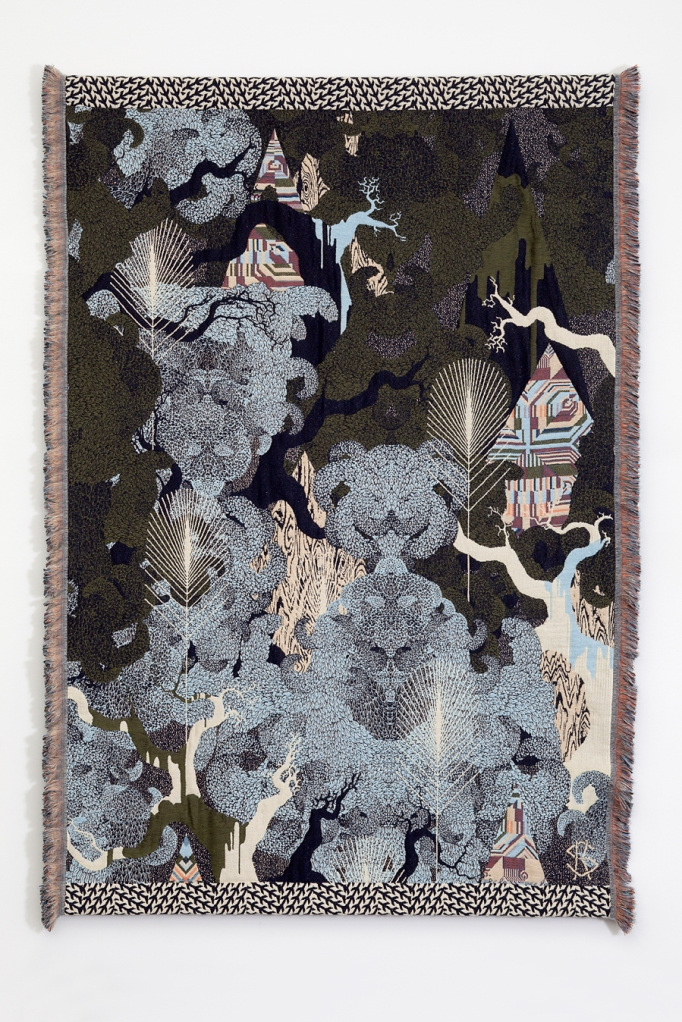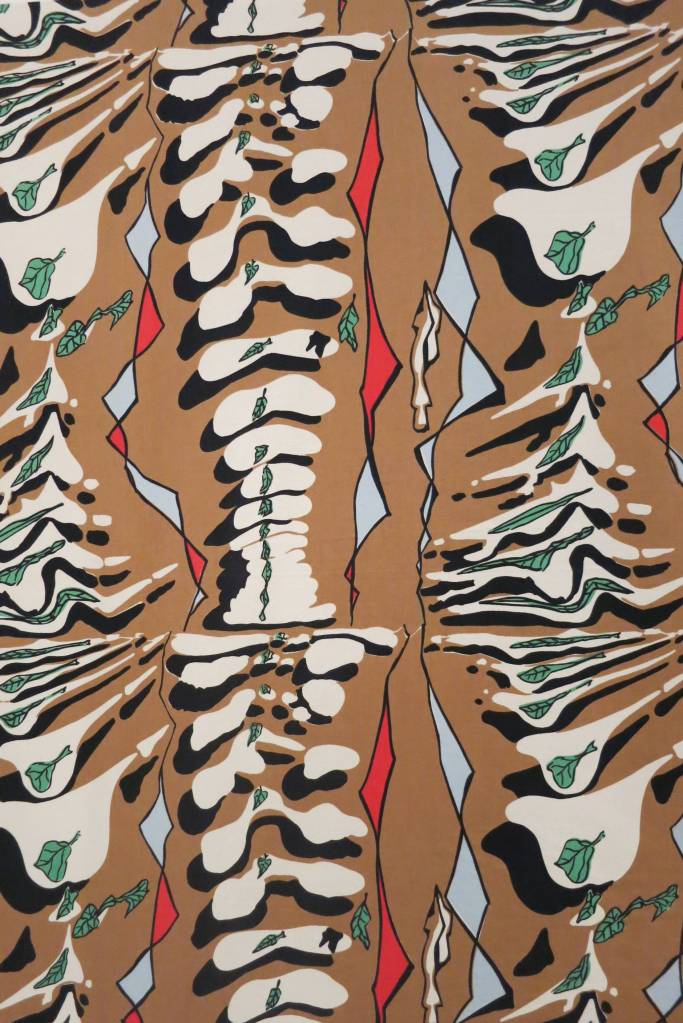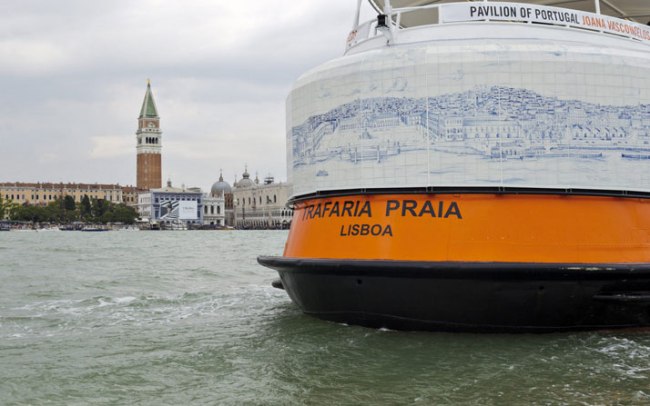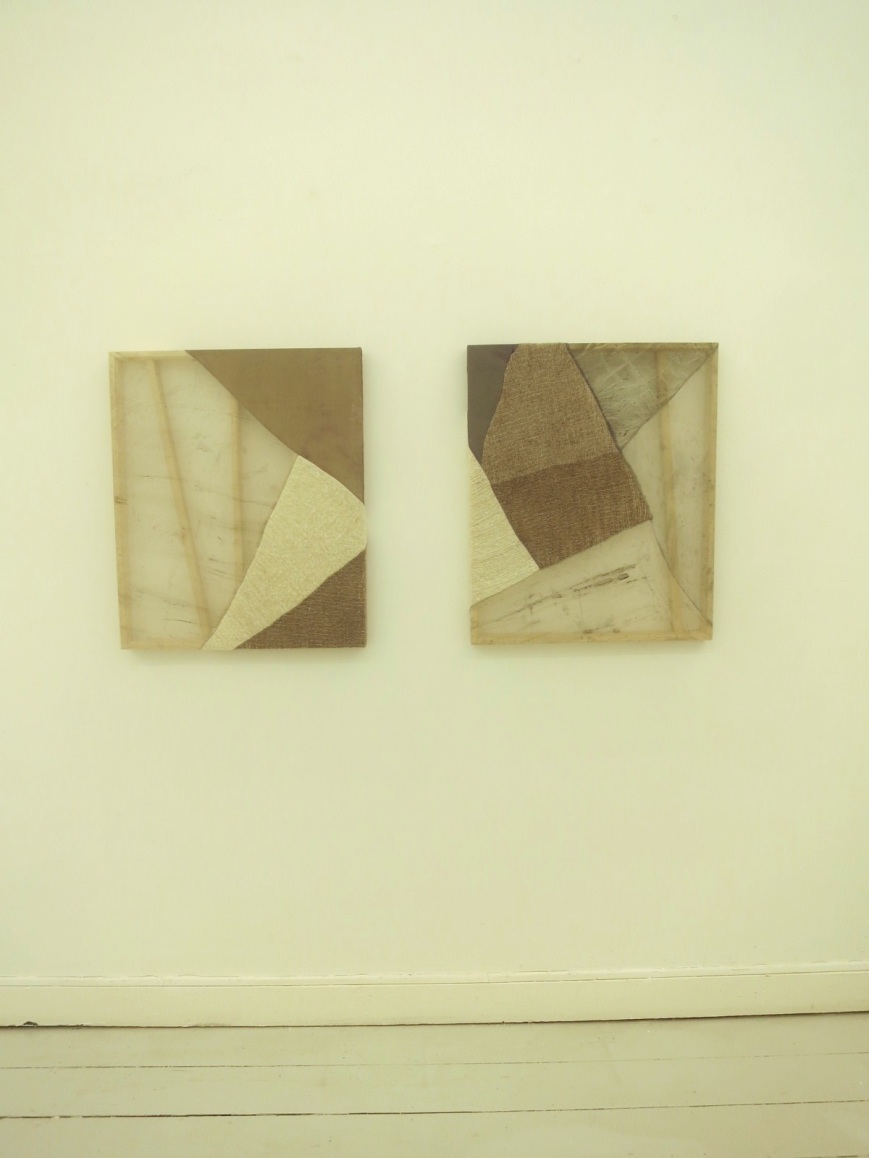 Martha Tuttle (°1989, Santa Fe, New Mexico) is only 29 but her work has been recently purchased by MOMA New York. That’s not what convinced me to go and see her work in person in the Geukens & De Vil gallery in Antwerp. I was attracted to how she manipulates organic materials and uses textile techniques to create works lingering between paintings and sculptures.
Martha Tuttle (°1989, Santa Fe, New Mexico) is only 29 but her work has been recently purchased by MOMA New York. That’s not what convinced me to go and see her work in person in the Geukens & De Vil gallery in Antwerp. I was attracted to how she manipulates organic materials and uses textile techniques to create works lingering between paintings and sculptures.
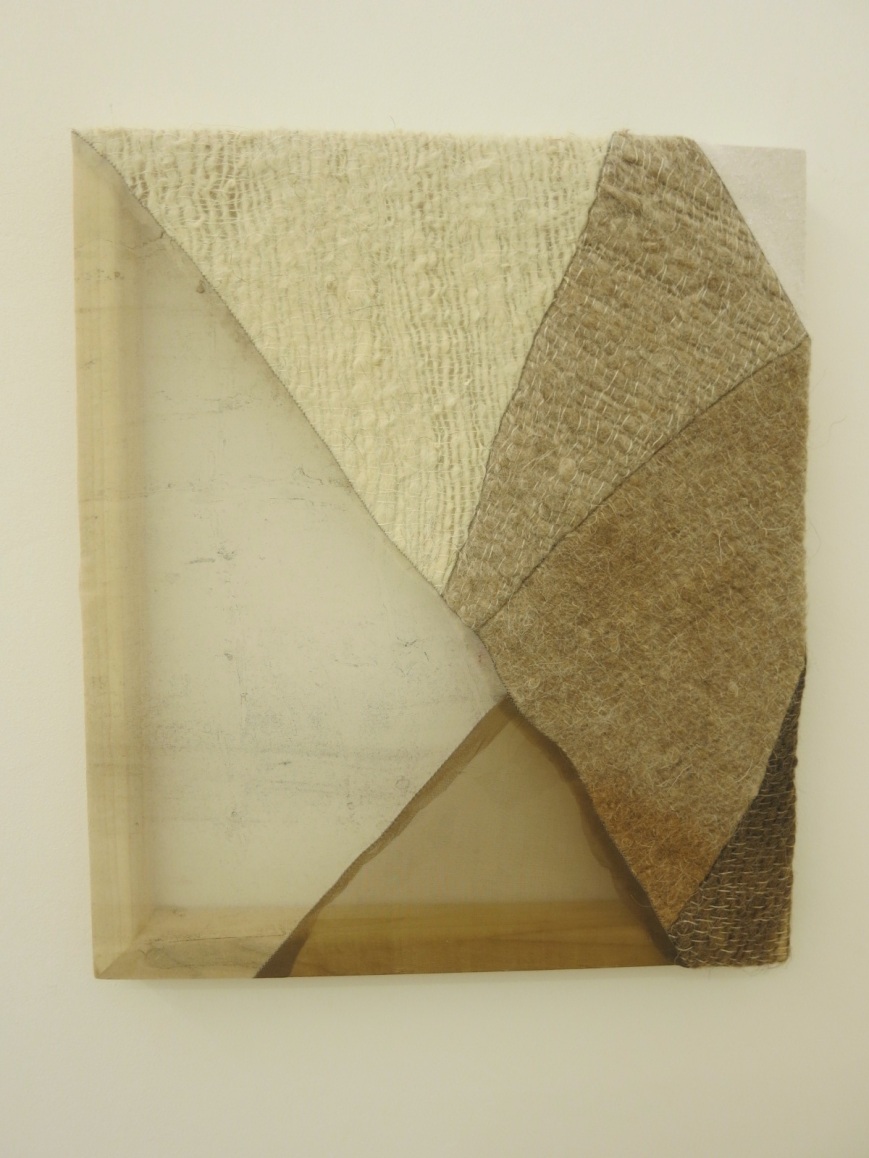


Martha Tuttle is fascinated by matter, by the live-ness and fluidity of organic materials. She spins the wool in each painting by hand, then weaves it into cloth which is washed and often pounded for hours. By spending so much time manipulating her materials the energy of the artist’s body becomes an integral part of the work. The dense, irregular wool surface is combined with fragments of dyed transparent silk showing the space behind the work. Elements of brass, bronze, found stones and stones cast from stainless steel add layers of materiality.
 For the exhibition in the gallery she added small shelves inspired by the beautiful architectural space of the gallery. And in doing so she is linking everything together: landscape, body, material. Fascinating artist to discover!
For the exhibition in the gallery she added small shelves inspired by the beautiful architectural space of the gallery. And in doing so she is linking everything together: landscape, body, material. Fascinating artist to discover!
Still on view till 24 November 2018 at Geukens & de Vil gallery.
If you want to know more: A video recording of a lecture Martha Tuttle gave in the Modern Art Museum of Fort Worth in 2016 is available on the Modern’s Youtube.

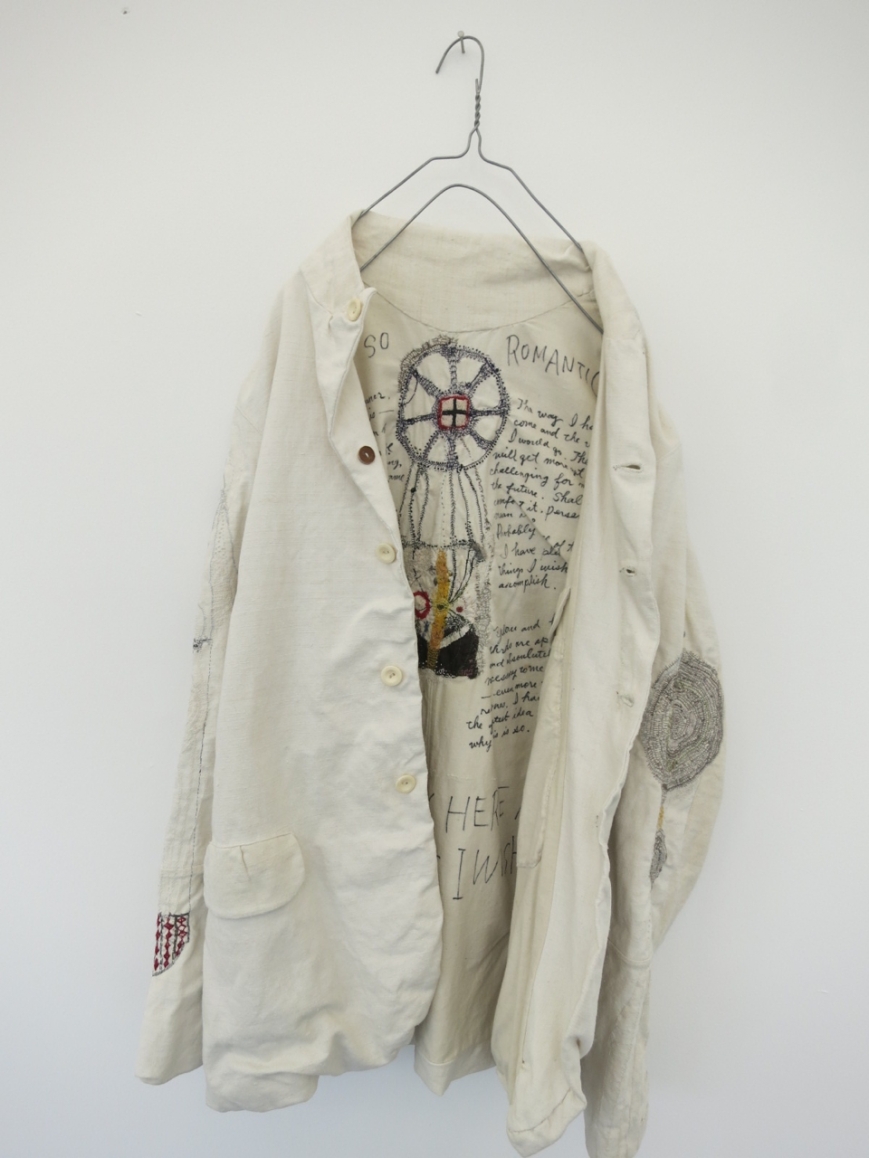






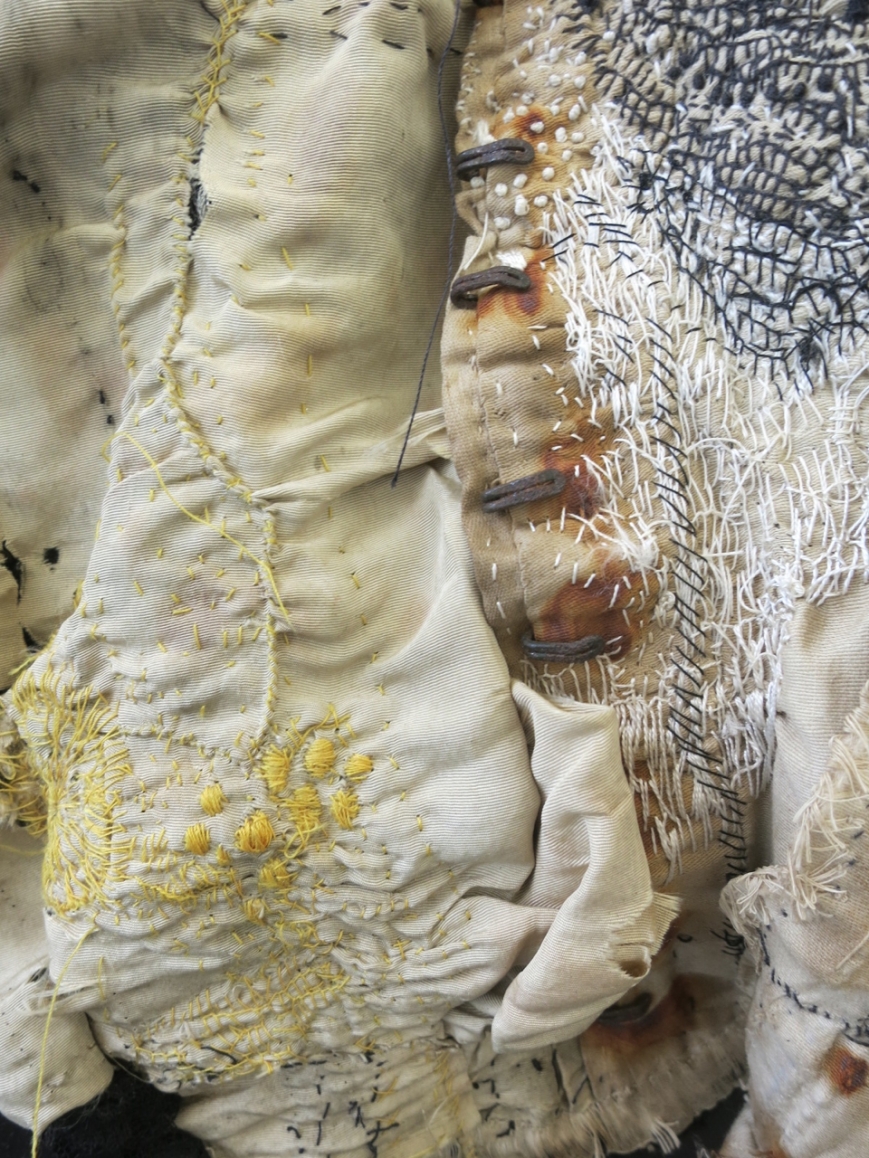 Apart from her 2 and 3 dimensional embroidered work, Oki is also known for a series of artist books. The success she enjoyed after showing her work to the world was compiled in a beatiful book ‘Punk’ that not only captures her work but also the unique atmosphere she manages to instill in each work.
Apart from her 2 and 3 dimensional embroidered work, Oki is also known for a series of artist books. The success she enjoyed after showing her work to the world was compiled in a beatiful book ‘Punk’ that not only captures her work but also the unique atmosphere she manages to instill in each work.


